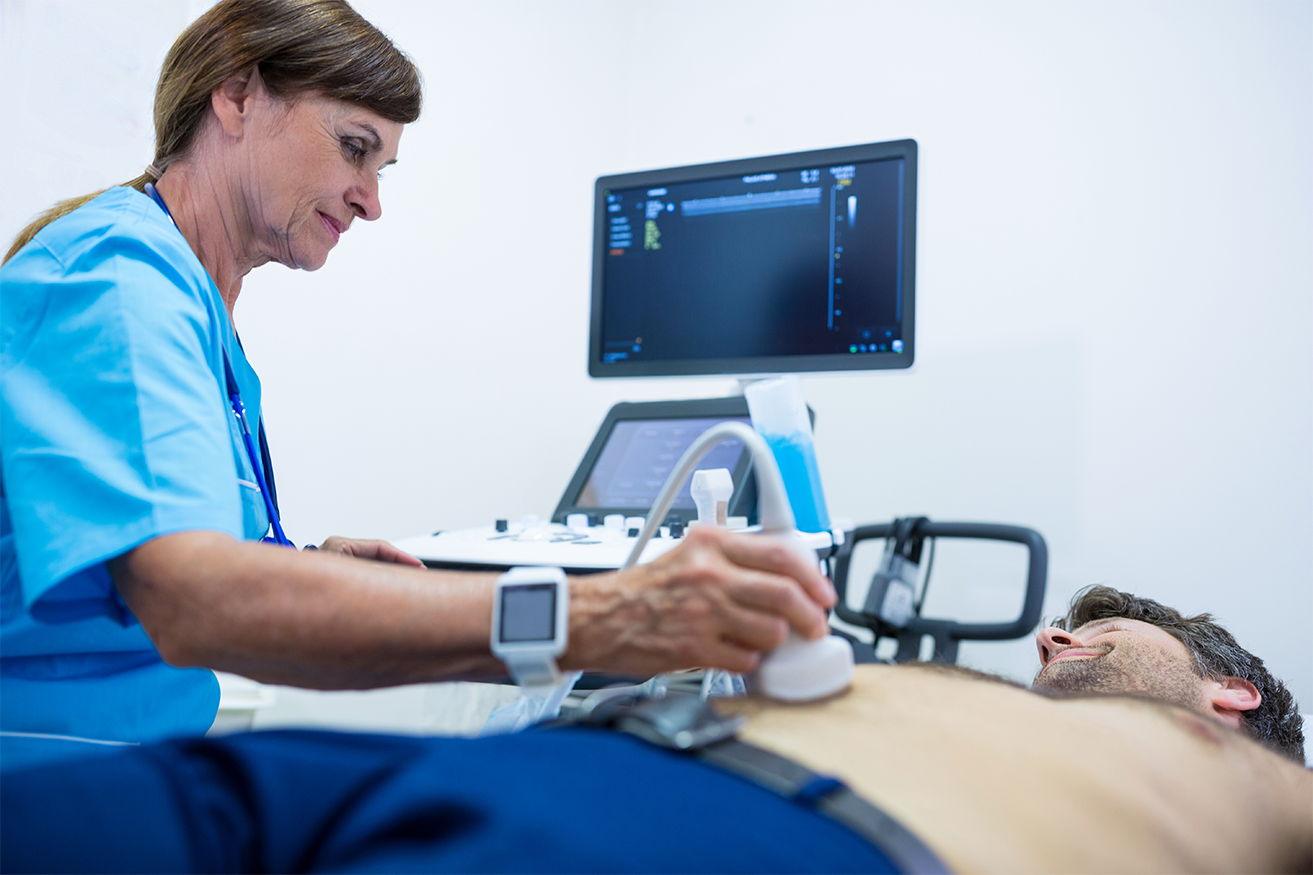
Radiofrequency Ablation Department
RFA may or may not be performed under mild sedation. If sedation is used, the patient is usually kept awake and conscious to an extent to be able to describe what they feel during the stimulation and lesioning of the nerve.
- The patient lies on his/her stomach on a procedure table. If sedation is used, an intravenous (IV) line is started so that relaxation medicine (sedation) can be given.
- The skin over the treatment area (neck, mid-back, or low back) is well cleaned to minimize the risk of infection.
- The physician numbs a small area of skin by injecting a numbing medicine (anesthetic) in the region of the RFA injection site.
- The physician uses x-ray guidance (fluoroscopy) to direct the RFA needle toward the medial or lateral branch nerves.
- Medial branch nerves transmit pain from the facet joint(s). Each facet joint is connected to 2 medial branch nerves that carry pain signals away from the spine to the brain.
- Lateral branch nerves transmit pain signals from the sacroiliac joint(s) between the sacrum and ilium in the pelvis to the brain.
- Once the needle tip is placed accurately, an active electrode is inserted through the needle, and a small amount of electrical current is carefully passed next to the target nerve and a safe distance from other nerves. This current may briefly recreate the painful symptoms that the patient usually experiences.
- Once the target nerve is confirmed, a heat lesion is created on the nerve using the preferred method (conventional, pulsed, or water-cooled radiofrequency) of ablation.
- This process may be repeated for additional nerves.
-
How painful is radiofrequency ablation?
Some patients describe the feeling as similar to a sunburn. On average, this pain lasts no longer than 1 to 2 weeks after the procedure. Full pain relief can be expected within 2 to 3 weeks after the procedure, since it can take some time for the ablated nerves to die and stop sending pain signals.
-
For the digestive system
Some patients describe the feeling as similar to a sunburn. On average, this pain lasts no longer than 1 to 2 weeks after the procedure. Full pain relief can be expected within 2 to 3 weeks after the procedure, since it can take some time for the ablated nerves to die and stop sending pain signals.
-
What is the recovery time for radiofrequency ablation?
Patients are often up and around and back to work 24 to 72 hours after the procedure. Pain relief is typically experienced within 10 days, although relief may be immediate for some patients and take up to three weeks for others.
-
Is radiofrequency ablation considered experimental?
Prescribed physical therapy for non-clinical reasons. The following Radiofrequency Ablation (RFA) procedures are considered experimental and investigational and not covered: Radiofrequency Ablation (RFA), conventional, cooled or pulsed, for treatment of sacroiliac joint 1
-
What is the name of the procedure where they burn the nerves in your back?
Radiofrequency neurotomy uses heat generated by radio waves to target specific nerves and temporarily turn off their ability to send pain signals. The procedure is also known as radiofrequency ablation.





